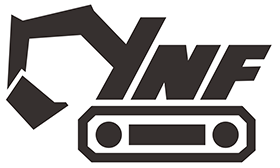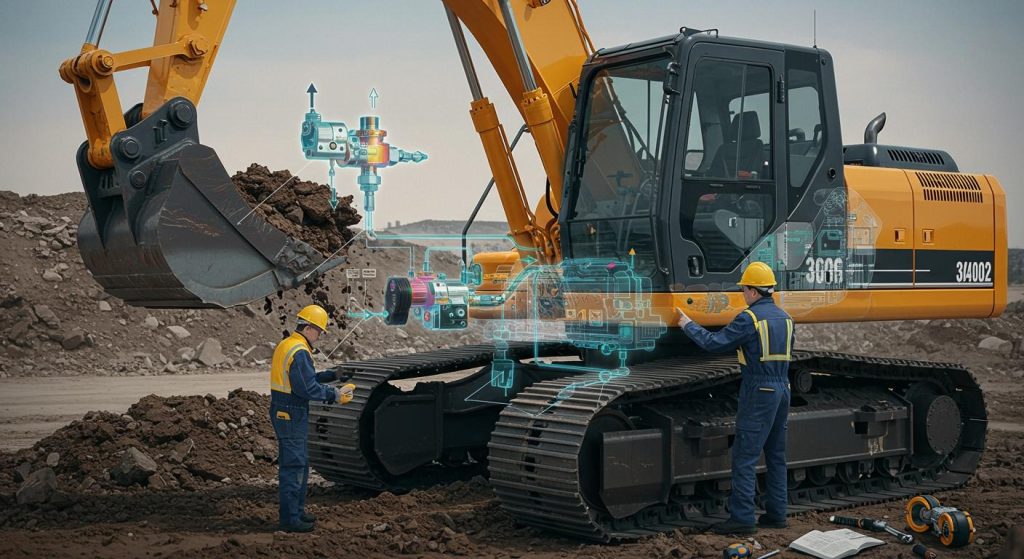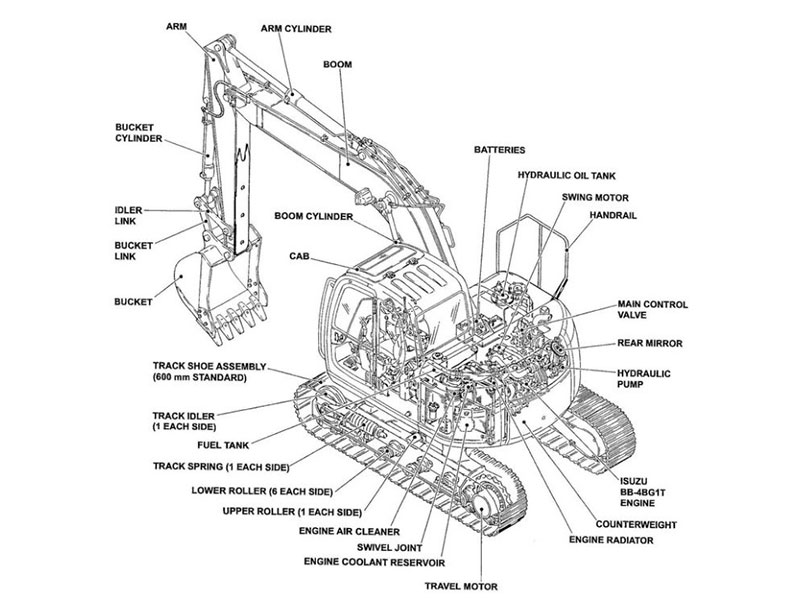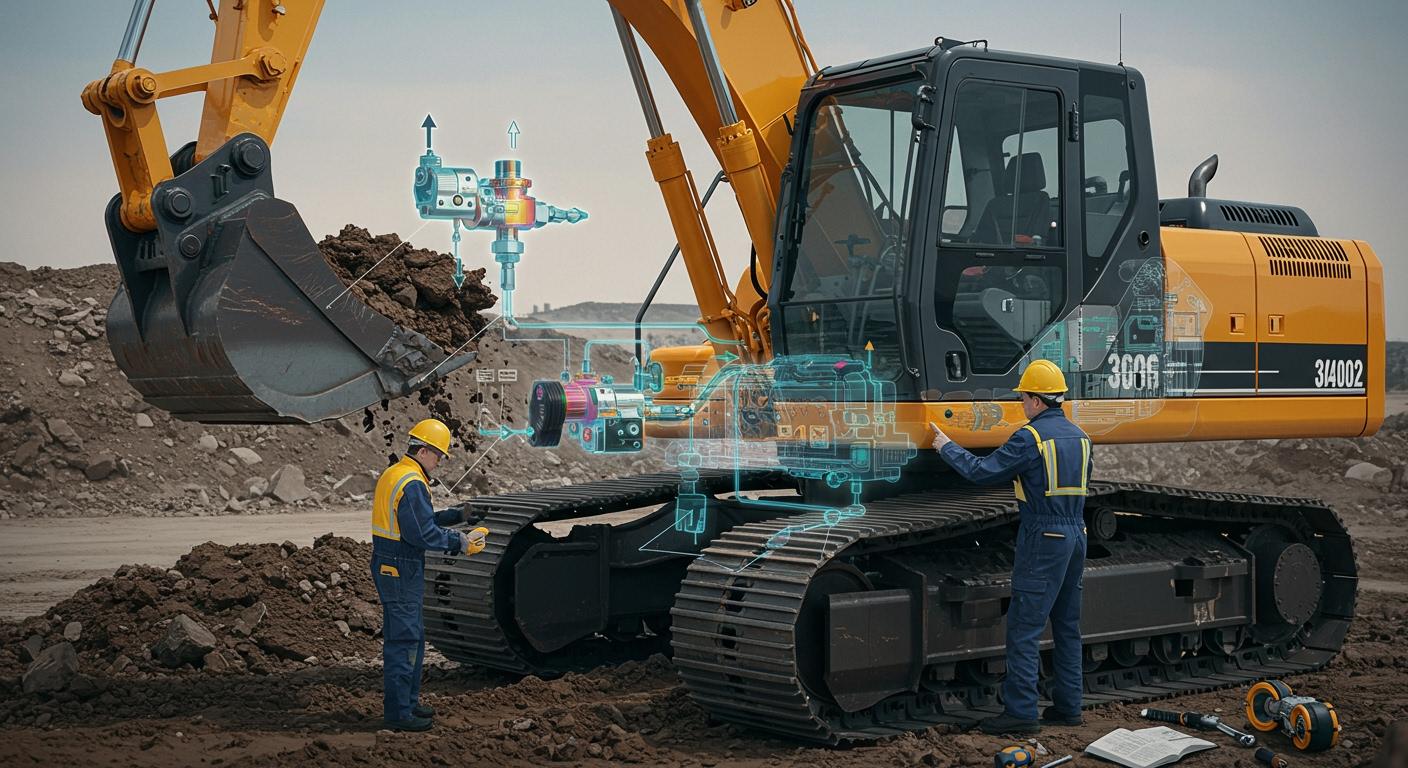
You can find out how an excavator hydraulic pump regulator works by looking for clear signs when it is running. The regulator manages the hydraulic pressure and flow. This keeps your excavator safe and working well. Watch for changes in the machine’s sound, movement, or how it reacts. Some common signs of problems are:
Hydraulic fluid leaks near the pump or hoses.
Loud banging or knocking sounds, which could mean air or cavitation.
Fluid getting hotter than 82°C, which can cause harm.
Weak final drive motor, showing low pressure.
Checking step-by-step helps you find these problems early and keeps your excavator working well.
Key Takeaways
Check your excavator’s hydraulic pump regulator often. This helps you find problems early. Look for leaks in the system. Listen for strange sounds. Watch the fluid levels closely.
Learn what the hydraulic pump regulator does. It controls pressure and flow. This keeps your excavator safe and working well.
Look at the parts and check the pressure. Use a pressure gauge to check the system. Make sure the pressure is in the normal range.
Watch for signs that something is wrong. Grinding noises or slow movement are warning signs. These mean the hydraulic pump regulator may need fixing.
Keep the hydraulic fluid clean and full. This helps your hydraulic system work better and last longer.
Excavator Hydraulic Pump Regulator Basics
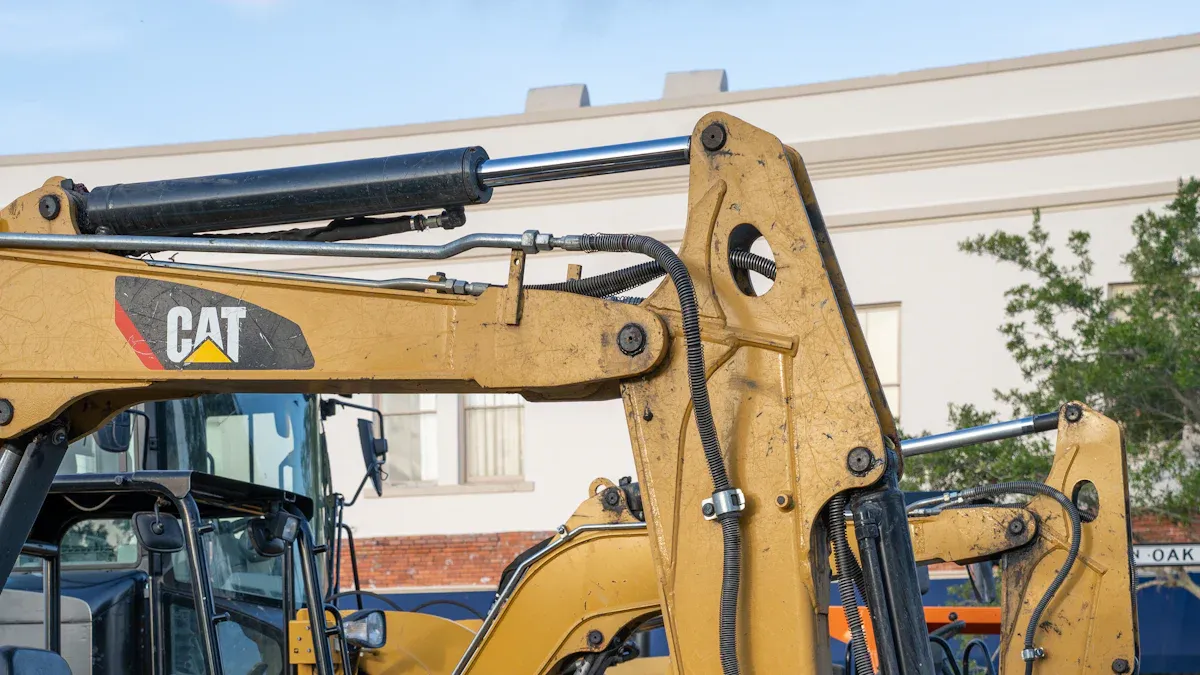
Main Functions
It is important to know what hydraulic pump regulators do. They help your excavator work well. The excavator hydraulic pump regulator controls pressure and flow. This keeps the machine safe and helps it work better. When you use the controls, the main pump regulator changes how much hydraulic fluid goes to each part.
The swash plate is a key part of this. The angle of the swash plate changes how the pump works:
The swash plate changes how much hydraulic fluid moves in the system.
It sends hydraulic fluid to different parts when you use the controls.
The swash plate helps change hydraulic pressure. This changes how much force the excavator uses.
It spreads power across the hydraulic system so everything works well.
The swash plate works with load-sensing systems to change the pump’s output when needed.
Load sensing helps the hydraulic pump regulator save energy. These systems only make as much flow as the actuators need. This saves energy and keeps the system cooler. You can control the excavator better, and the hydraulic system lasts longer.
A positive valve plate angle goes against, and a negative angle helps the swash plate tilt.
Key Components
Hydraulic pump regulators have many important parts. Each part has a special job:
Valve plate: Sends oil in the right direction and keeps things smooth.
Cylinder block: Lowers pressure changes and stops parts from slipping.
Ball guide: Sets the shaft’s direction and speed to keep it steady.
Retainer plate: Holds parts in place and stops shaking.
Piston shoe: Keeps seals tight and stops wear.
Thrust plate: Moves pressure and helps the pump last longer.
Swash plate: Lets you change angles to adjust speed and pressure.
Support: Gives the pump a strong base.
Drive shaft front/rear: Moves power from the motor to the pump.
Servo block: Controls fluid flow in and out of the pump.
Charge pump: Gives pressure fluid and makes up for any loss.
Pilot valve: Controls oil flow and is important for operation.
Flow regulator: Changes flow rate to control pressure and protect the engine.
Knowing these parts helps you find problems early and keep your hydraulic system working well.
Identifying Regulator Operation
Visual Signs
You can spot problems with hydraulic pump regulators by looking closely at your excavator. Start with a visual inspection. This helps you find issues before they get worse. Follow these steps:
Check the pilot pump and its connections. Look for leaks, corrosion, or damage. Make sure all fittings and hoses are tight and show no signs of wear.
Look at the hydraulic fluid level. Keep it within the manufacturer’s recommended range. Low fluid can cause cavitation and damage the pump.
Examine the hydraulic fluid. If it looks dark, cloudy, or smells bad, change it. Clean fluid keeps hydraulic pump regulators working well.
Inspect all hydraulic lines and connections. Focus on hose fittings and places that wear out quickly. Leaks can lower pressure and hurt the hydraulic system.
Watch for changes in the way your excavator sounds. Listen for loud knocking or banging. These noises can mean air is in the hydraulic pump or the system has cavitation. Look at the swash plate movement. If the swash plate does not tilt smoothly, the main pump regulator may not work right. You may also see hydraulic fluid leaking near the pump or hoses. These signs show that hydraulic pump regulators need attention.
Tip: Regular visual checks help you catch problems early and keep your excavator safe.
Pressure and Flow Checks
You need to check pressure and flow to make sure hydraulic pump regulators work well. Use a pressure gauge to measure system pressure. Compare your readings to standard values. Most excavator hydraulic pump regulators should show system pressure around 330 BAR. You may also see pressure values between 1700 and 14,700 kPa for normal operation. Some systems reach 23,500 to 34,300 kPa when working hard. Flow should increase by about 18 liters per minute when the system needs more power.
Parameter | Value Range |
|---|---|
System Pressure | 1700–14,700 kPa |
Flow Increase | ~18 liters/minute |
System Pressure | 23,500–34,300 kPa |
System Pressure | ~330 BAR |
Check the hydraulic pump for steady pressure and flow. If you see drops or spikes, the hydraulic pump regulators may not work right. Watch the swash plate as you test the system. It should move smoothly when you change the controls. If the swash plate sticks or moves slowly, the regulator or pump may have a problem.
Listen for changes in sound during pressure tests. Unusual noises can mean trouble inside the hydraulic pump. Look for leaks while the system runs. Fluid leaks show that hydraulic pump regulators need repair. Always keep the hydraulic fluid clean and at the right level. This helps the hydraulic pump and regulator last longer.
Note: If you find low pressure, slow flow, or strange noises, stop using the excavator and check the hydraulic pump regulators. Fixing problems early saves time and money.
Hydraulic Pump Regulators: Performance Indicators
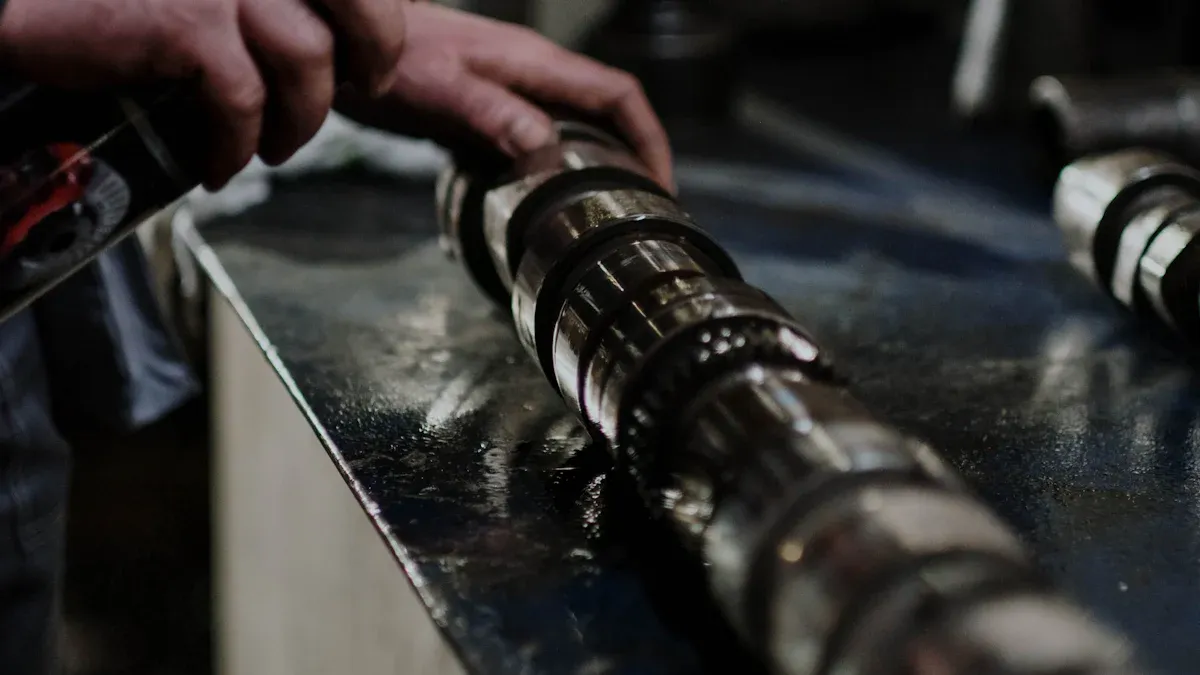
Normal Operation Signs
You can tell if hydraulic pump regulators work well by looking for some signs. The excavator arms and bucket move smoothly and do not jerk. The hydraulic fluid is clean and at the right amount. The pump runs quietly and does not make loud noises. There are no leaks near the pump or hoses. The swash plate tilts easily when you use the controls. The hydraulic temperature stays under 82°C, which keeps the system safe.
Different hydraulic pump regulators show these good signs in their own ways. You can look at this table to compare pump types:
Pump Type | Efficiency | Pressure Capabilities | Maintenance Requirements |
|---|---|---|---|
Gear | High | Low | Easy |
Vane | Moderate | High | Easy |
Piston | High | High | Moderate |
Some brands are known for working very well. Rexroth-Uchida type AP2D is strong and can handle up to 42 Mpa. Kawasaki K3V and K5V series last a long time and work in many machines.
Tip: Check your hydraulic pump regulators often to keep them working well.
Malfunction Symptoms
You should watch for signs that show hydraulic pump regulators are not working right. These signs help you find problems early and stop damage.
You hear grinding, whining, or knocking from the pump. These sounds can mean parts inside are worn out or there is cavitation.
The excavator moves slower than normal. Weak arms or bucket mean the pump does not give enough pressure.
The engine uses more fuel. A bad pump makes the engine work harder.
The hydraulic system gets too hot. Overheating means the pump is not working well.
You see hydraulic fluid leaking near the pump seals. Leaks often happen when parts are worn out.
The excavator shakes more when it works. This can happen if the pump is not balanced inside.
Warning lights turn on. These lights tell you when hydraulic pressure is not normal.
If you see any of these signs, stop using the excavator and check the hydraulic pump regulators. Fixing problems fast helps you avoid bigger repairs.
Note: Clean hydraulic fluid and regular checks help keep your hydraulic pump regulators in good shape.
Troubleshooting and Assessment
Operational Tests
You can do simple tests to check hydraulic pump regulators. These tests help you find problems early. They also keep your excavator working well. First, watch the hydraulic system temperature while it runs. High temperatures can mean the hydraulic pump regulators are not working right. Next, measure the flow rate at different pressures. This shows if the pump gives enough power for each job. Always check for leaks. Use hydraulic leak detectors to look at all connections when the system is under pressure.
Here is a table with common tests for hydraulic pump regulators:
Test Type | Description |
|---|---|
Temperature Monitoring | Watch the hydraulic system temperature while it works. |
Efficiency Evaluation | Measure flow rate at different pressures to check pump power. |
Leak Test | Look for leaks at all connections using hydraulic leak detectors. |
Tip: Doing these tests often helps you find problems before they get worse.
Diagnostic Techniques
You can use special ways to see if hydraulic pump regulators need fixing. Listen for odd noises when the pump is running. Grinding or whining sounds can mean parts inside are worn out. Watch how the excavator arms and bucket move. If they move slowly, the hydraulic pump regulators may not give enough pressure. Check the hydraulic fluid’s color and smell. Dirty or burnt fluid can hurt the hydraulic pump regulators and the pump.
If you see leaks, overheating, or warning lights, stop using the excavator. Check the hydraulic pump regulators right away. Sometimes, you need special tools to test pressure and flow. If you cannot find or fix the problem, ask a professional technician for help. YNF Machinery sells good hydraulic pump regulators for excavators. You can trust their products to keep your hydraulic system working well.
Note: Always follow the manufacturer’s rules when testing hydraulic pump regulators. Getting help from experts keeps repairs safe and your equipment working longer.
You can keep your excavator safe by doing easy checks. Look at your machine often to find leaks or worn parts. Check the fluid to make sure it is clean and at the right level. Watch the system pressure to see if it is normal. These steps help you fix problems early and make your hydraulic pump regulator last longer.
Actionable next steps:
Change filters often.
Look at fluid levels and quality every day.
Check for leaks and watch the system temperature.
Doing these checks helps keep everyone safe and lowers risks. If you need good parts, YNF Machinery can help with your maintenance.
FAQ
How often should you check your excavator’s hydraulic pump regulator?
Check the hydraulic pump regulator every day before work. Look for leaks and listen for odd sounds. Check fluid levels to make sure they are right. Doing these checks helps you find problems early.
What happens if you ignore a faulty hydraulic pump regulator?
If you ignore a bad regulator, your excavator can lose power. You may see leaks or hear loud noises. The machine can get too hot. Ignoring these signs can cause bigger damage and cost more to fix.
Can you replace a hydraulic pump regulator by yourself?
You can change a hydraulic pump regulator if you have the right tools. Make sure you follow the manufacturer’s instructions. If you are not sure, ask a professional technician for help.
What should you do if you see hydraulic fluid leaking?
Stop the machine right away if you see a leak. Check all hoses and connections for damage. Tighten any loose fittings you find. If you cannot find the leak, call a technician. Leaks can lower pressure and hurt the system.
Where can you buy quality hydraulic pump regulators?
You can buy good hydraulic pump regulators from YNF Machinery. They sell reliable parts for many excavator models. You can contact them for help picking the right regulator.
